Google I/O Connect Berlin
Topics:
- community
- event
- google developer groups
Google I/O Connect Berlin was a day by, and for, developers across Europe, the Middle East, and Africa (EMEA). It was hosted at Wilhelm Studios in Berlin, an impressive venue featuring four large stages covering Web, Cloud, Android, and AI, each with its full-day schedule of talks, panels, and demonstrations.
Beyond those stages was an immense hall packed with demo and Q&A stations where you could try out the latest tech, an indoor living Android garden featuring interactive Veo and Androidify demos, and a grassed picnic area. There was also plenty of space to sit down with your laptop and work, and waiters brought everyone a seemingly endless supply of food to stay fuelled throughout the day.
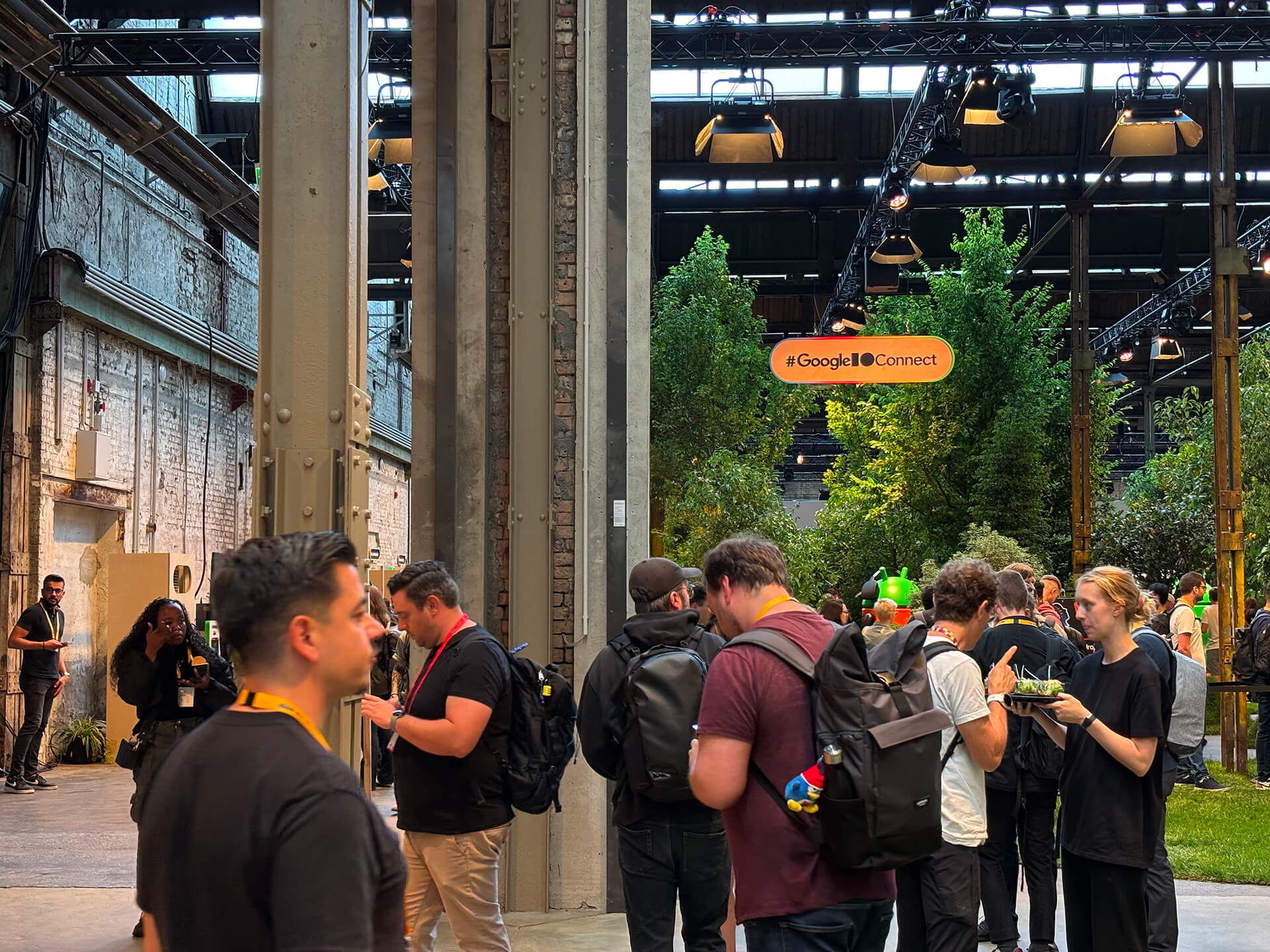
Keynote
After checking in, I grabbed my lanyard and badge and headed to the Web stage to watch the opening keynote, streamed live across all stages from the already-full AI stage. As is standard for Google talks, it was packed with demos of the latest new features in Android, Gemini and the Web, with Rachel Andrew, Content Lead for Chrome DevRel, and Paul Kinlan, Team Lead for Chrome DevRel, demonstrating the highlights of new features in web, including Baseline, built-in AI, and new experiments with CSS carousels. These were then expanded upon in greater technical detail in Paul’s What’s new in Chrome presentation that immediately followed, kicking off the day’s schedule of Web talks.
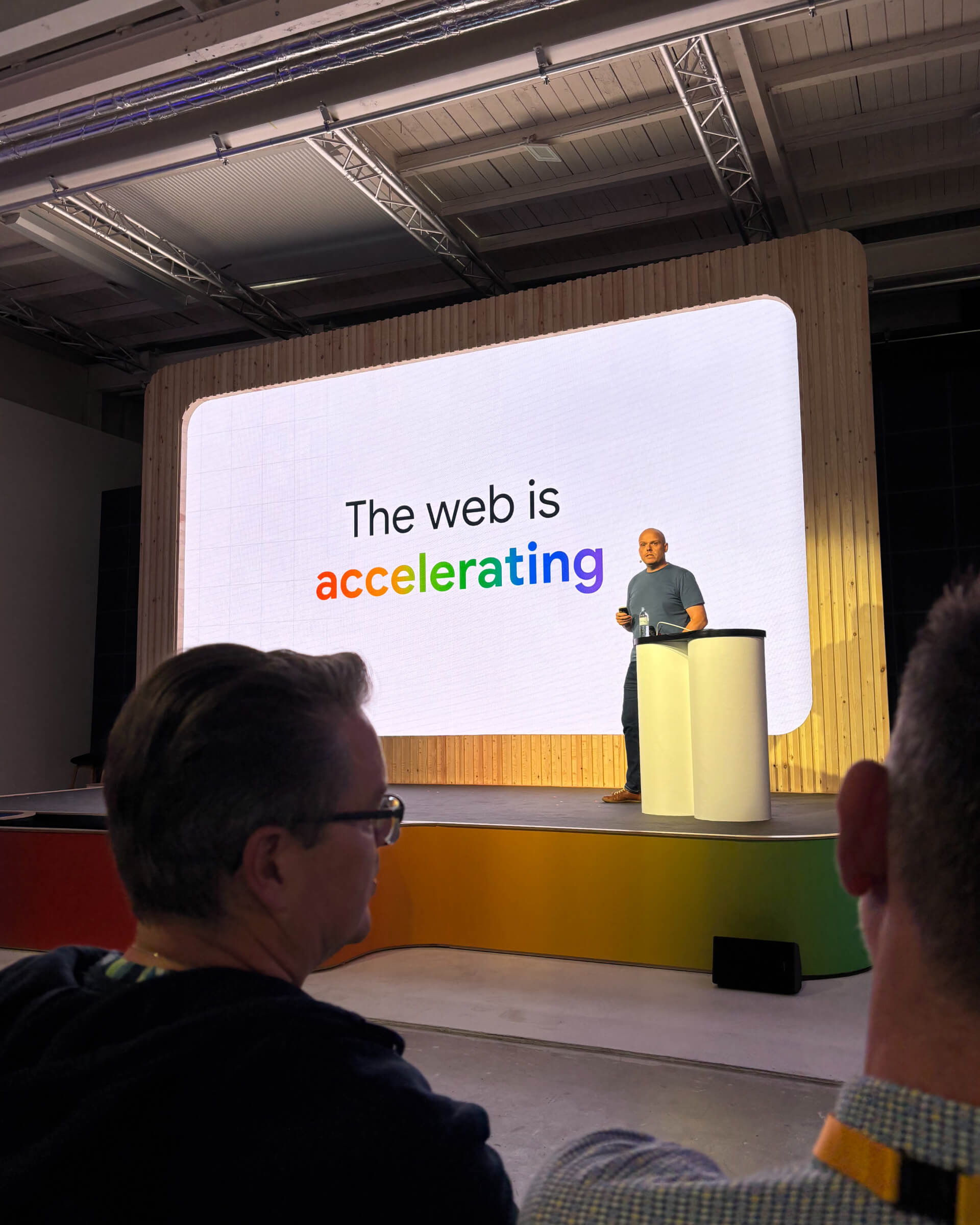
AI in Google Chrome
The Ask the Chrome DevRel team about AI panel led by Thierno Thiam, Web Ecosystem Consultant for the Web Ecosystem, followed on from the announcement at Google I/O that, powered by Gemini Nano, Chrome has released new built-in AI APIs, meaning you can start to experiment with using AI directly in your users’ browsers, with the benefit of reduced latency, lower cost, and enhanced privacy — as you can keep user prompts and content in their browser without uploading to a hosted AI model.
It was exciting to discuss and explore the possibilities of the future of this technology, with the Language Detector, Proofreader, Writing, and Rewriting APIs ready and available for use in Chrome 138. They also discussed Google’s collaboration with the W3C Web Incubator Community Group to standardise these APIs so they can work across browsers, with the aim that developers will eventually be able to build websites with cross-browser support for in-browser AI.
Baseline
Jeremy Wagner, DevRel Tech Writer at Chrome, followed with a walkthrough on Using Baseline in your web development workflow. With this year’s news that they have now mapped 100% of web features data, Baseline gives developers clear information on the status of support for every web feature across major browsers.
One of the main drivers of this project was the idea that developers should not need to individually track browser support for every individual feature on the web. This information should be easily accessible to developers, enabling them to focus on building.
Developers can now integrate Baseline into their development workflow using tools they already use, such as Visual Studio Code, JetBrains WebStorm, ESLint, and Stylelint. You can configure your linting to be as strict and specific as needed, defining when to log a warning, when to throw an error, and which Baseline year and stage you wish to target.
You can also use the Google Analytics Baseline Checker to see what Baseline target your users support, and then configure linting in your code repository to ensure you are only using web features supported by your users’ browsers, so that you can stop using global averages and instead target exactly what your users need.
Lunch
A very welcome lunch break granted the opportunity to grab some food, explore the demo and Q&A stations, and visit the Android garden. Thankfully for me, the vegan options were plentiful and delicious. Despite wrestling with a bottle opener for a bottle of water, it was great to see nearly all food and drink served without plastic. I also bumped into Brecht de Ruyte, nervous before his afternoon panel on Web UI — but I was sure he’d be great, given how fantastic and exciting his talk was at our GDG Douglas DevFest last year.
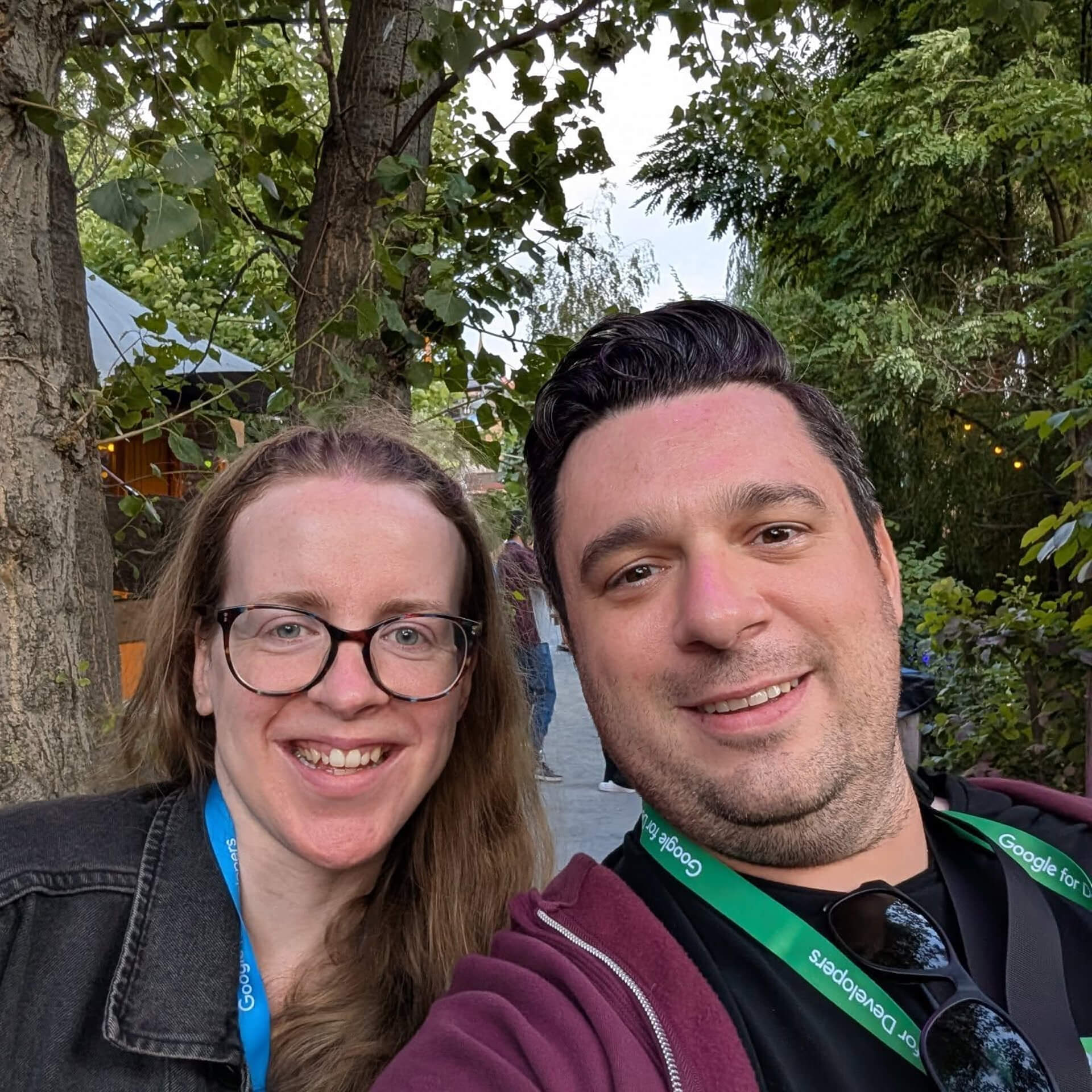
Web UI
After lunch, there was a great panel on Web UI from Bramus Van Damme, DevRel Engineer at Chrome, Rachel Andrew, and Brecht, with lots of excitement about the speed of progress in web, the Interop project, the Open UI community group, and 100% feature mapping for tracking web support using Baseline.
It was refreshing to see how openly the DevRel team discussed feedback on new features such as CSS carousels, specifically highlighting Sara Soueidan’s detailed article Are ‘CSS Carousels’ accessible? on major accessibility issues with the CSS carousels in their current state.
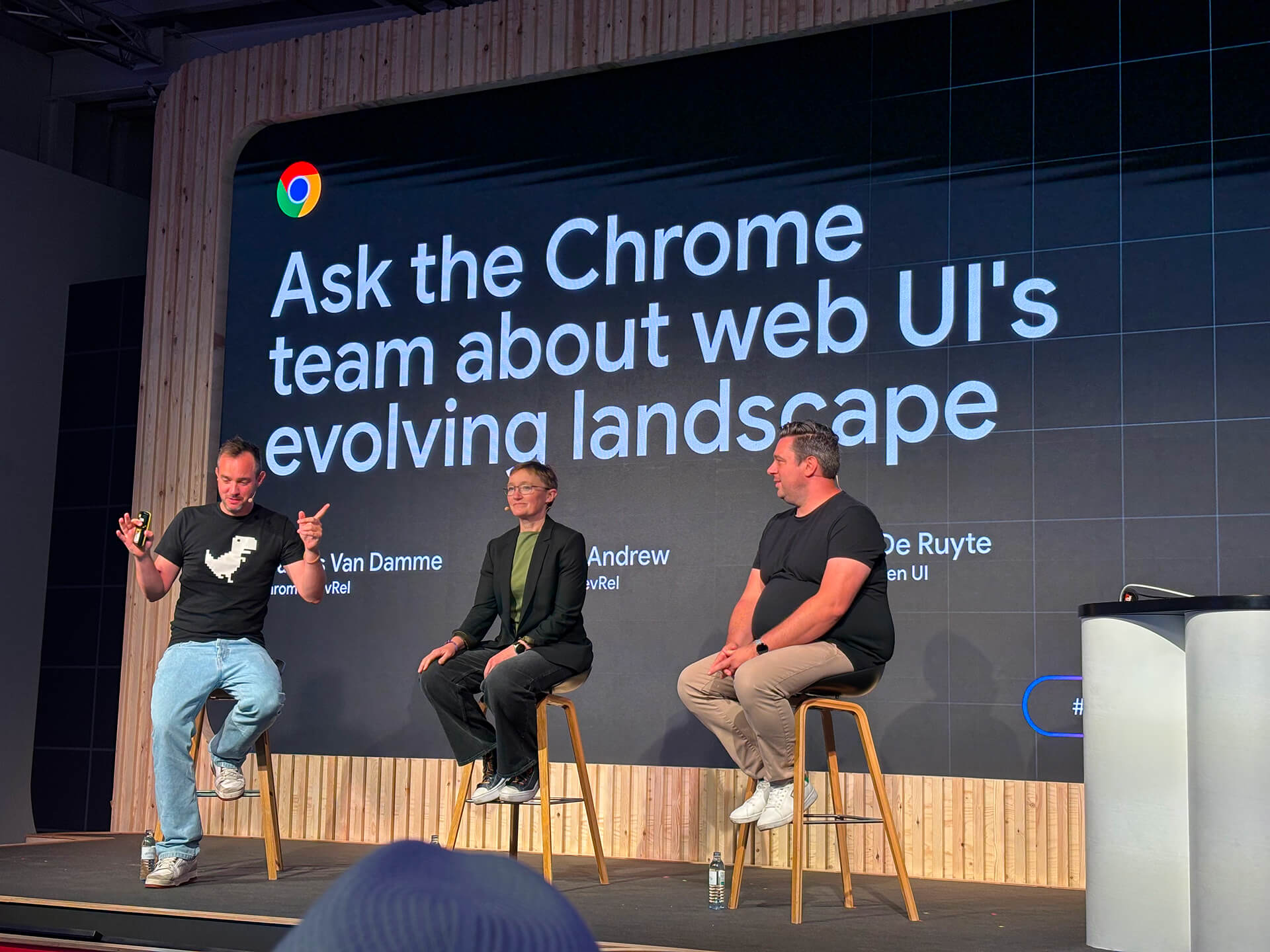
I asked Rachel about the potential of the Baseline project to expand to help developers more easily understand the accessibility support of web features — she confirmed this is an ongoing discussion internally. While the multiplier effect of different operating systems, assistive technologies, browsers, and modes of using the web would make this much more challenging than the Baseline project, they’re aware of interest from potential champions of a new initiative to bring this to developers.
Following the panel, I had a great discussion with Bramus on the need for us to move beyond labelling features and platforms as accessible or not in such a binary way when we are building for such a diverse range of users on the web — it’s not accurate or sufficient to label a new feature as “accessible”, when in reality it is not accessible for everyone. While there’s still much work to do, it was exciting to speak with other developers who are driven and passionate about making the web accessible for everyone.
Chrome DevTools
Following the great Web UI panel was a fantastic demo from Matthias Rohmer, DevRel Engineer for Chrome, wonderfully titled A Chrome DevTools adventure with Pixel Pirate Pete’s treasure hunt, showcasing the latest in Chrome DevTools. You could hear the excitement from the audience as he demonstrated a range of powerful new debugging capabilities for developers building for the web. New features, including AI in DevTools, HTTP response overrides, and autofill test data, will make frontend debugging much smoother — these are features I’ve already adopted into my development workflow.
Web Privacy
The packed day on the web stage rounded off with a panel on Privacy Solutions for the Web, led by Ashley Irving, Tech Writer for Google’s Privacy Sandbox, with hints of what’s to come with the future of browsing on the web without third-party cookies, using tools such as the FedCM API and Fenced Frame API.
There was a strong emphasis on transparency, ensuring users understand what is happening with their data and what they are signing up for. While GDPR introduced informed consent for cookies, users have, in many instances, been overwhelmed by pop-ups, endless lists of cookies to toggle, and lengthy Privacy Policies written in legalese that remain largely unread. The panel quickly got technical, and even among experienced developers, it was clear there’s still a lot of work to do to ensure both developers and users have a greater understanding and awareness of privacy on the web.
The End
At the end of the event, there were Chrome Dino ice lollies, a Jazz band, and happy hour — a welcome rest after a day packed with learning. It was a great end to an eye-opening few days in Berlin, meeting old friends, making new ones, and feeling the community spirit from the GDG and GDE networks across EMEA. Events like this are wonderful reminders of how our small communities, connected across continents, are part of a remarkable and joyful global collective. The organising team did a fantastic job, and I hope to be a part of many more of these events in the future!
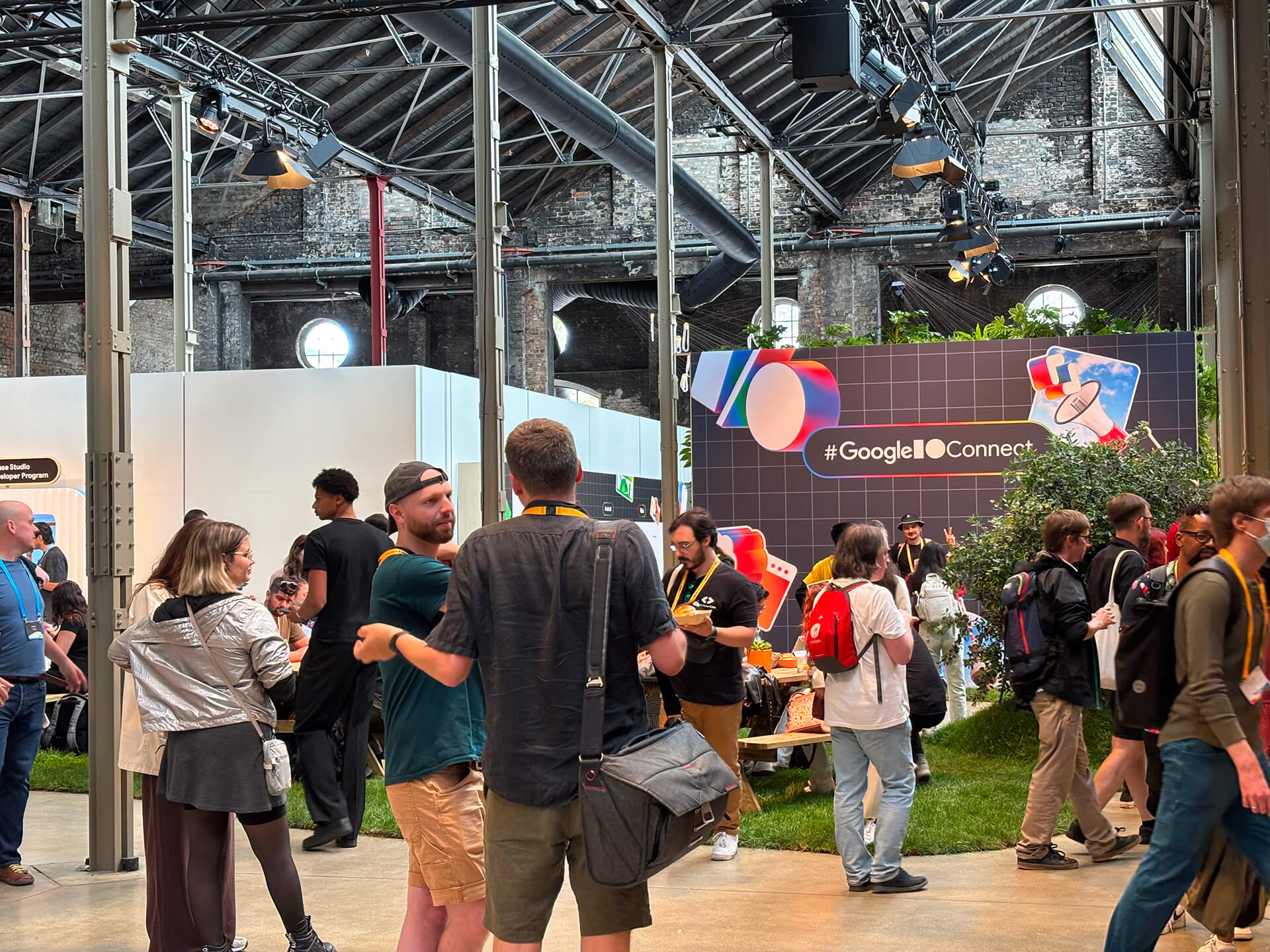
Who wrote this?
-
Harley Garrett
- Frontend developer
- Accessibility advocate
- Always reading